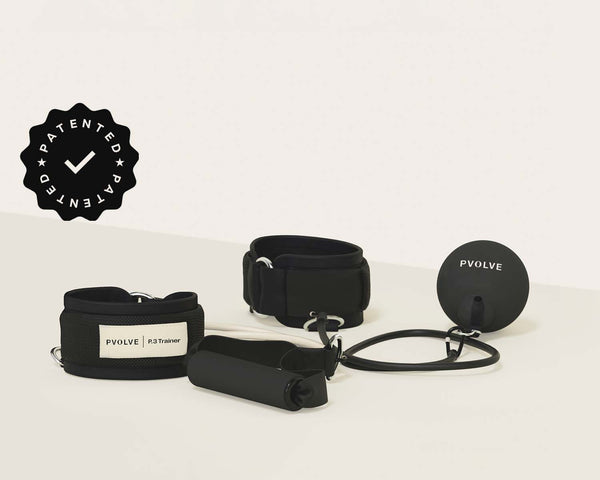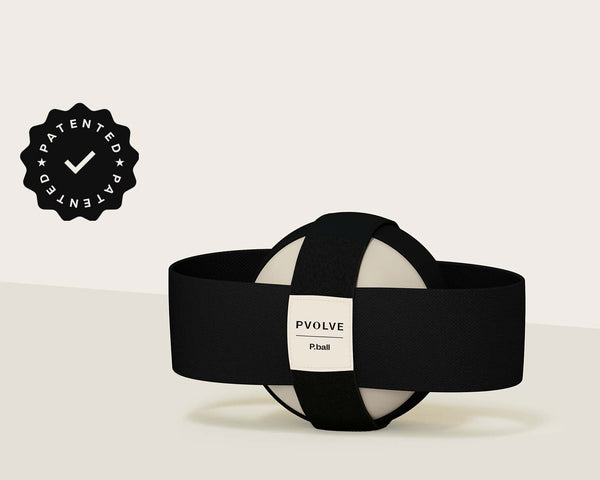Stretching your muscles doesn’t just feel good—it primes your body for optimal performance.
Along with that satisfying “I just worked out” burn in your muscles at the end of a Pvolve workout, you might also notice that our trainers encourage you to take one our Recover & Stretch class to get a good stretch in. That’s not just because it feels great. It’s because stretching keeps our muscles in a good resting position, says Amy Hoover, DPT, Chief Physical Therapist and member of Pvolve Clinical Advisory Board, which ultimately helps the muscle to perform at its best when we ask it to move, contract, and lengthen.
All that is to say that stretching should be an integral part of any fitness routine, and Pvolve’s Recover & Stretch category has everything you need from a recovery and mobility standpoint, says Antonietta Vicario, VP Talent & Training for Pvolve. There’s everything from static stretches—holding traditional stretches for longer periods of time to open up your muscles—for the days you need something more relaxing, to dynamic stretches which mobilize all the major joint complexes in the body, increasing blood flow and mobility and leaving you feeling energized. “I also have to mention all the myofascial release work with the foam roller and massage balls, which can feel so intense in the moment because it really does feel like a deep massage!” Vicario adds.
The benefits you get also play into the fundamentals of our workout approach. Functional movement is at the core of Pvolve Method, meaning our workouts are designed to sculpt your body while also helping you move more freely and feel more open in your body all day, every day. Our classes weave in all these elements to unlock your body so it can move the way it was designed to. And each Recover & Stretch class supports that, priming your muscles to move in every way you need them to.
Why Is Stretching Important?
We’ve said it before and we’ll say it again: Stretching is important to keep muscles in a good resting position, which ultimately helps the muscle perform at its best when we ask it to move, contract, and lengthen. Stretching also helps to keep stress out of our joints by improving the integrity and function of the muscles.
When we stretch a muscle we separate the fibers of that muscle, which lengthens it, Hoover explains. “This needs to happen when we move our bodies. Our muscles need to be able to contract and lengthen in order to create power to move us through our day.”
Benefits of Stretching
Stretching is important for both range of motion and strength and overall functional movement.
It helps maintain healthy muscles, keeping them flexible enough to work through their entire range of motion and creating power and strength throughout the movement. This, in turn, helps take pressure off the joints, and reduces wear and tear on them.
Of course, stretching also feels really good. That’s because it allows us to move more freely and without restriction, which may help temporarily alleviate aches and pains. When a muscle is tight it may restrict movement and cause a pulling sensation when we move.
There’s a mental benefit to stretching as well: It’s another opportunity to breathe deeply, focus on where you are in the moment, and take some time for yourself. It truly is restorative movement.
Different Types of Stretching
At different times, your body might respond better to static stretching or dynamic stretching. While the overall goal is the same—to stretch the muscle so that it remains flexible—there are some differences between the two types of stretches. While stretching is considered a form of active recovery, dynamic stretching is typically more active than static stretching.
What is Static Stretching?
Static stretching is where a muscle is stretched while holding in a lengthened position without moving. For example, Hoover says, to stretch the hamstrings you would bend forward from standing and touch the floor and holding that position for a period of time.
What is Dynamic Stretching?
Dynamic stretching is lengthening a muscle during a movement, where the muscle stretches due to a specific body movement. Hoover offers this example: to dynamically stretch the hamstrings you would kick your leg straight up in front of you with a straight knee and then return to standing without pausing.
Typically, a warmup might be considered dynamic stretching. These stretching and mobility exercises would target some of the same muscles and movements in your upcoming workout, to fully prepare your body for it.
Recover & Stretch with Pvolve
Have we convinced you to stretch more? Good news: The Recover & Stretch category has everything you need to stretch and condition your muscles for optimal performance, from full-body stretches to moves targeting specific body parts. While many stretching classes require no equipment at all, some use tools like the P.ball and P.ball strap in the Lower Back & Hip Opener class, massage balls in the Foot & Ankle Release, and a foam roller in the Hip & Thigh Mat Myofascial Release & Stretch. With over 70 classes to choose from, it’s everything you need to help keep your body flexible and strong.






































